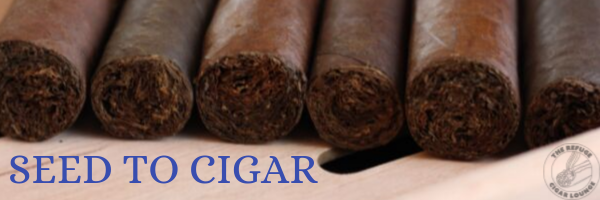That fantastic masterpiece of tobacco engineering you have in your hand had to start somewhere, right? We’re going to take you back to the beginning of it all. You might even be a little surprised at how much work goes into creating that perfect cigar.
The very first thing we have to start with is the seed. The tobacco seed determines the size, color, texture, and type of plant that will grow. The soil and the climate is planted in, however, creates the taste, aroma, ash color, and burning qualities of the cigar.
The first steps of planting take place in September and October. The tobacco seeds are no larger than a pinhead. For the first 45 days, the seeds are planted in transportable trays. After 45 days, they are mature enough to be transplanted in the fields. During this period, the seeds are carefully watched over and it is not permitted to smoke cigars around them for fear of a virus being transmitted from microscopic ash residue.
To Be Continued…

